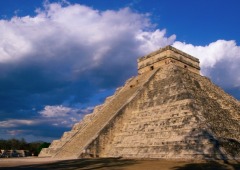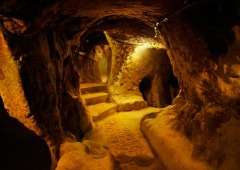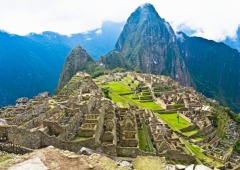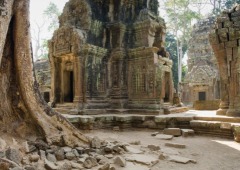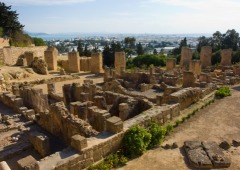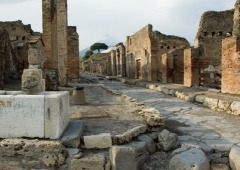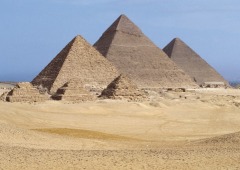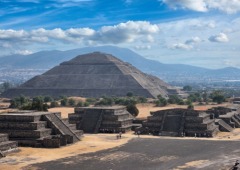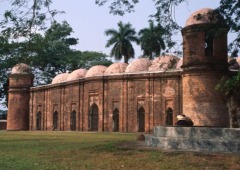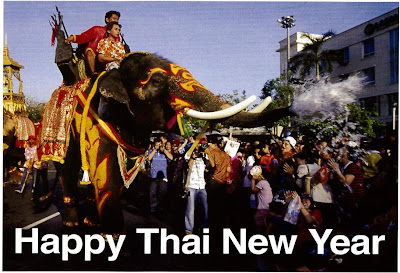Customs Rules
Import regulations::
Free import :
- 200 cigarettes or 50 cigars or 225 grammes of tobacco;
- max. 1 litre of wine, spirits or malt liquor;
- max. 100 matches;
- cosmetics, perfumery, soaps and dentrifices in open containers to a total max. value of MYR 200.-;
- max. 3 pieces of new wearing apparel;
- one pair of new footwear;
- one unit of each portable electrical or battery operated appliance for personal care and hygiene;
- a total max. of MYR 75.- of dutiable food preparations;
- gifts and souvenirs up to a total value of max. MYR 200.- (except goods from Langkawi and Labuan, up to a total value of max. MYR 500.-).
The trafficking of illegal drugs is a serious offence in Malaysia and the penalty for such an offence is death.
The items 1. through 9. can only be imported duty free if the following conditions are met:
- the articles are imported by the visitor on his person or his baggage;
- non-alien residents stay in Malaysia more than 120 hours;
- nationals and residents of Malaysia have left the country for more than 120 hours.
Prohibited:
- all goods from South Africa and Israel;
- any article bearing the imprint or reproduction of any currency note, bank note or coin which are current or have at any time been issued in any country.
Additional Information on regulations::
Customs duties of 30% of the value are due in case of exceeding the allowed quantities. Duty free allowances are per person only (pooling not allowed).
Export regulations::
Free export of reasonable quantities of tobacco products and alcoholic beverages.
Pets::
Require:
- health certificate, issued 7 days prior to departure and stating that during the preceding 6 months no case of rabies has occurred in the country of dispatch and the animal has not been imported in the country of origin;
- landing permit;
- Malaysian Veterinarian Department, Import Permit. Address: 8th floor Shell Building, Exchange Square Off. Jalan Semantan, Bukit Damansara, Kuala Lumpur, Malaysia. Phone: 03 2540077, Fax: 03 2535804.
Dogs and cats are quarantined for 30 days or more, unless coming from Singapore (export licence from Government of Singapore required), Australia, New Zealand, the United Kingdom or Ireland. Originating airports must telex station manager of transporting airline at point of disembarkation flight number, origin and destination, types and numbers of pets. Those subject to quarantine must have space reserved in advance at Kuala Lumpur Quarantine Station.
Baggage Clearance regulations::
Baggage is cleared at the airport of final destination in Malaysia, provided it is labeled so.
Exempt: baggage of transit passengers with a destination outside of Malaysia, provided it is labeled to that destination and the onward flight is on the same calendar day.
--------------------------------------------------------------------------------
Airport Embarkation Tax
Airport Tax is levied on air passengers departing as follows:
1. International flights : MYR 45.-;Except from:
a- Ipoh, Langkawi or Penang to:
- Bandah Acheh, Medan or Nias in Indonesia;
- Hat Yai, Narathiwat or Patani in Thailand;
b. Kota Kinablu, Kuching or Miri to:
- Bandar Seri Begawan in Brunei;
- Balikpapan, Menado, Pontianak or Tarakin in Indonesia;
- Davao, General Santos, Puerto Princesa or Zamboanga in the Philippines;
where the airport tax is: MYR 20.-.
2. Domestic flights: MYR 6.-.
Place of payment: if ticket issued:
1. In Malaysia: airline ticket office in Malaysia.
2. Outside Malaysia: Airport of departure in Malaysia.
Excempt:
1. Transit passengers proceeding by same aircraft or not leaving the transit lounge;
2. Those arriving from abroad (including Brunei and Singapore) and proceeding to abroad within 12 hours;
3. Crew travelling on duty;
4. Children under 2 year;
5. Heads of state, including their suite, Ministers and other dignitaries visiting Malaysia as State Guests;
6. Other persons when specified by Malaysia Airport Authority (Berhad). The exemption must be supported by written authorization from Airport Authority.
--------------------------------------------------------------------------------
Currency rules
Currency Import regulations:
Currency must be declared upon arrival, and is allowed for both RESIDENTS and NON-RESIDENTS, if carrying:
- local currency (Malaysian Ringgit-MYR): MYR 1,000.- or higher amounts;
- foreign currencies: USD 10,000.- (or equivalent in other foreign currency) or higher amounts.
Currency Export regulations:
Currency must be declared on departure, and is allowed for both RESIDENTS and NON-RESIDENTS, if carrying:
- local currency (Malaysian Ringgit-MYR): MYR 1,000.- or higher amounts;
- foreign currencies: USD 10,000.- (or equivalent in other foreign currency) or higher amounts.
Additional information: Travel Declaration Form (TDF) is required for passengers entering or leaving Malaysia, regardless of age. Foreign currencies include funds in the form of travellers' cheques. Clearance from the Central Bank of Malaysia is required for amounts exceeding those stated above.
Import regulations::
Free import :
- 200 cigarettes or 50 cigars or 225 grammes of tobacco;
- max. 1 litre of wine, spirits or malt liquor;
- max. 100 matches;
- cosmetics, perfumery, soaps and dentrifices in open containers to a total max. value of MYR 200.-;
- max. 3 pieces of new wearing apparel;
- one pair of new footwear;
- one unit of each portable electrical or battery operated appliance for personal care and hygiene;
- a total max. of MYR 75.- of dutiable food preparations;
- gifts and souvenirs up to a total value of max. MYR 200.- (except goods from Langkawi and Labuan, up to a total value of max. MYR 500.-).
The trafficking of illegal drugs is a serious offence in Malaysia and the penalty for such an offence is death.
The items 1. through 9. can only be imported duty free if the following conditions are met:
- the articles are imported by the visitor on his person or his baggage;
- non-alien residents stay in Malaysia more than 120 hours;
- nationals and residents of Malaysia have left the country for more than 120 hours.
Prohibited:
- all goods from South Africa and Israel;
- any article bearing the imprint or reproduction of any currency note, bank note or coin which are current or have at any time been issued in any country.
Additional Information on regulations::
Customs duties of 30% of the value are due in case of exceeding the allowed quantities. Duty free allowances are per person only (pooling not allowed).
Export regulations::
Free export of reasonable quantities of tobacco products and alcoholic beverages.
Pets::
Require:
- health certificate, issued 7 days prior to departure and stating that during the preceding 6 months no case of rabies has occurred in the country of dispatch and the animal has not been imported in the country of origin;
- landing permit;
- Malaysian Veterinarian Department, Import Permit. Address: 8th floor Shell Building, Exchange Square Off. Jalan Semantan, Bukit Damansara, Kuala Lumpur, Malaysia. Phone: 03 2540077, Fax: 03 2535804.
Dogs and cats are quarantined for 30 days or more, unless coming from Singapore (export licence from Government of Singapore required), Australia, New Zealand, the United Kingdom or Ireland. Originating airports must telex station manager of transporting airline at point of disembarkation flight number, origin and destination, types and numbers of pets. Those subject to quarantine must have space reserved in advance at Kuala Lumpur Quarantine Station.
Baggage Clearance regulations::
Baggage is cleared at the airport of final destination in Malaysia, provided it is labeled so.
Exempt: baggage of transit passengers with a destination outside of Malaysia, provided it is labeled to that destination and the onward flight is on the same calendar day.
--------------------------------------------------------------------------------
Airport Embarkation Tax
Airport Tax is levied on air passengers departing as follows:
1. International flights : MYR 45.-;Except from:
a- Ipoh, Langkawi or Penang to:
- Bandah Acheh, Medan or Nias in Indonesia;
- Hat Yai, Narathiwat or Patani in Thailand;
b. Kota Kinablu, Kuching or Miri to:
- Bandar Seri Begawan in Brunei;
- Balikpapan, Menado, Pontianak or Tarakin in Indonesia;
- Davao, General Santos, Puerto Princesa or Zamboanga in the Philippines;
where the airport tax is: MYR 20.-.
2. Domestic flights: MYR 6.-.
Place of payment: if ticket issued:
1. In Malaysia: airline ticket office in Malaysia.
2. Outside Malaysia: Airport of departure in Malaysia.
Excempt:
1. Transit passengers proceeding by same aircraft or not leaving the transit lounge;
2. Those arriving from abroad (including Brunei and Singapore) and proceeding to abroad within 12 hours;
3. Crew travelling on duty;
4. Children under 2 year;
5. Heads of state, including their suite, Ministers and other dignitaries visiting Malaysia as State Guests;
6. Other persons when specified by Malaysia Airport Authority (Berhad). The exemption must be supported by written authorization from Airport Authority.
--------------------------------------------------------------------------------
Currency rules
Currency Import regulations:
Currency must be declared upon arrival, and is allowed for both RESIDENTS and NON-RESIDENTS, if carrying:
- local currency (Malaysian Ringgit-MYR): MYR 1,000.- or higher amounts;
- foreign currencies: USD 10,000.- (or equivalent in other foreign currency) or higher amounts.
Currency Export regulations:
Currency must be declared on departure, and is allowed for both RESIDENTS and NON-RESIDENTS, if carrying:
- local currency (Malaysian Ringgit-MYR): MYR 1,000.- or higher amounts;
- foreign currencies: USD 10,000.- (or equivalent in other foreign currency) or higher amounts.
Additional information: Travel Declaration Form (TDF) is required for passengers entering or leaving Malaysia, regardless of age. Foreign currencies include funds in the form of travellers' cheques. Clearance from the Central Bank of Malaysia is required for amounts exceeding those stated above.








